Menu
Physics Lesson 6.4.1 - What is Moment of Force?
Please provide a rating, it takes seconds and helps us to keep this resource free for all to use
Welcome to our Physics lesson on What is Moment of Force?, this is the first lesson of our suite of physics lessons covering the topic of Moment of Force. Conditions of Equilibrium, you can find links to the other lessons within this tutorial and access additional physics learning resources below this lesson.
What is Moment of Force?
Let's consider again the examples mentioned in the introduction. If we have a regular and homogenous bar and we want to make it stay horizontally in equilibrium when putting it on a pivot, the only position which grants such an equilibrium (although very frail) is at the centre of mass of the bar, i.e. at its middle, as shown in the figure.
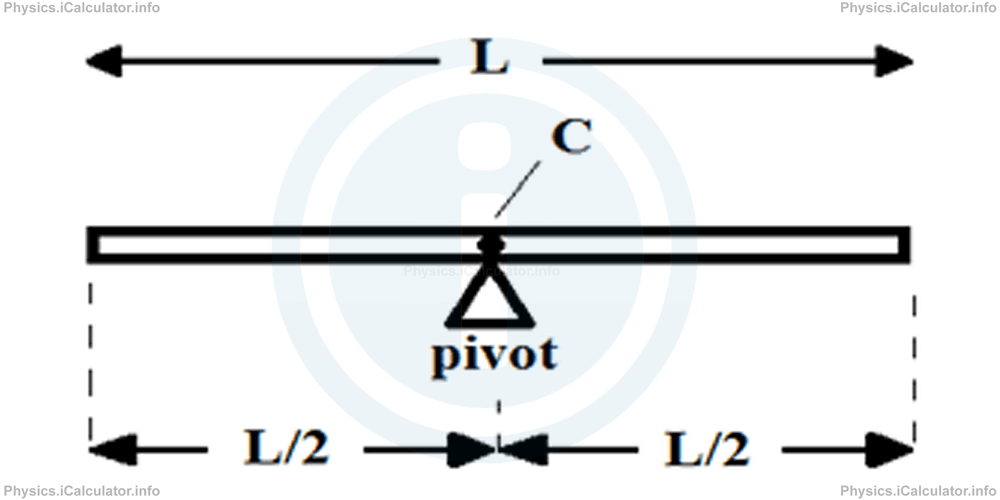
Thus, if the bar length is L, the pivot must be placed under the point C (centre of mass) which is at L/2 to set up the equilibrium. Otherwise, the bar will lean in the direction of the heaviest piece. Look at the figure:
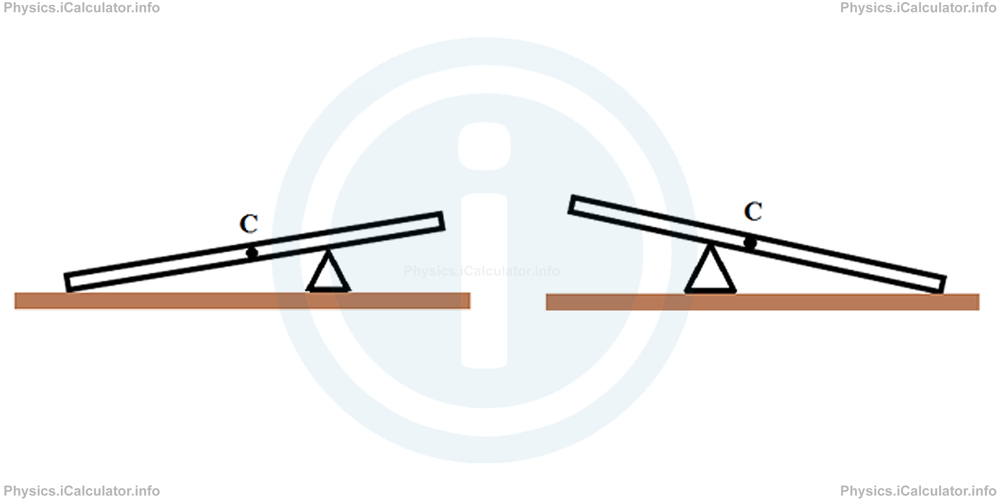
The same thing occurs when we hang a bar on a string.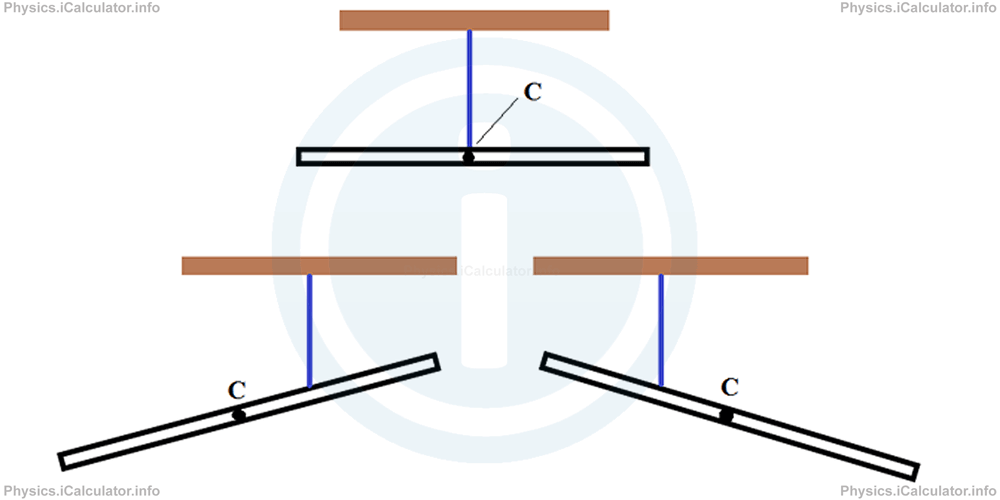
Such a lean is not linear; the system tends to rotate around the pivot or the hanging point instead. Therefore, a turning effect towards the support is produced. In scientific terms, this turning effect is known as "Moment of Force", in short M⃗ and it is a vector quantity.
There are two possible turning directions in such systems: clockwise and anticlockwise as shown in the figure below.
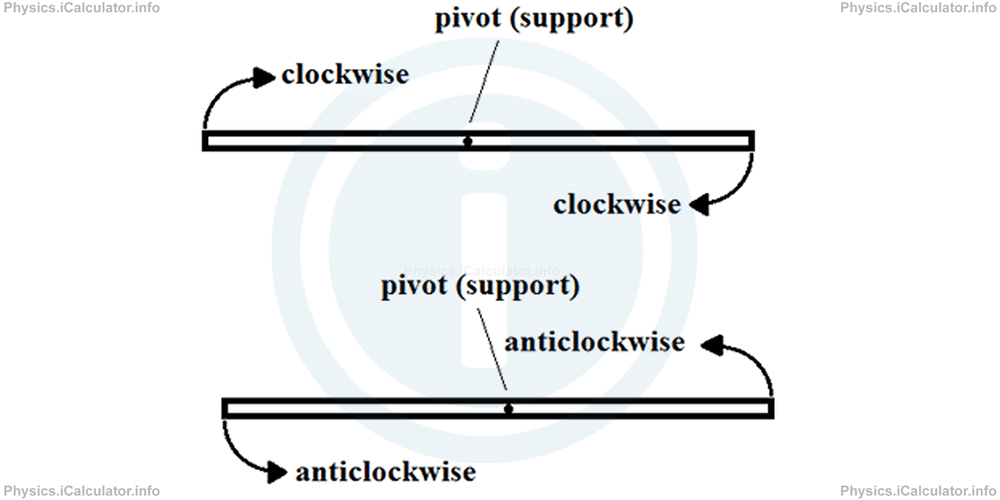
When the bar is very light so that its weight is negligible (such as a polystyrene bar or similar), we can use two loads placed on both sides of the pivot to set up an equilibrium similar to the abovementioned ones.
If the loads are identical, we must place the pivot at middle of the bar, otherwise the system will lean towards the farthest load from the pivot (towards the longer arm). In such cases, we can balance the system by placing a heavier load on the other end as shown in the figure below.
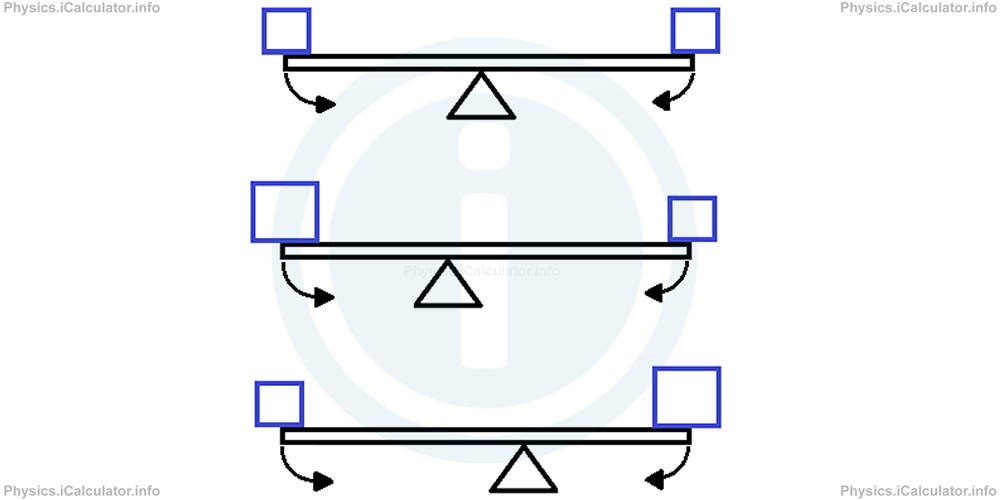
This means there are two factors affecting the turning effect (moment) of a force. They are:
1. The magnitude of force
Greater the force, easier the rotation around the turning point, i.e. greater the moment of force.
2. The distance from the turning point
Greater the distance from the turning point, easier the rotation around the turning point, i.e. greater the moment of force.
Combining the above factors in a single equation, we obtain for the Equation of moment of force:
Equation 1
M⃗ = F⃗⊥ × ∆x⃗where F⃗⊥ is the perpendicular force to the bar, which acts on it and ∆x⃗ is the linear distance from the application point of the force to the turning point (pivot) of the bar.
The unit of moment of force is [N × m]. Since it is obtained from the cross product of two vectors, it cannot be equal to the unit of work (and energy), i.e. Joule. In the tutorial "Work and Energy", we have stated that Work is obtained by the dot (scalar) product of two vectors: Force and Displacement. The result therefore was a scalar. On the other hand, here we have a cross product of two vectors, which gives as a result a new vector (see the tutorial "Cross (Vector) Product of Two Vectors". Therefore, energy and moment of force cannot have the same unit; the unit of moment of force is simply Newton × metre, not Joule.
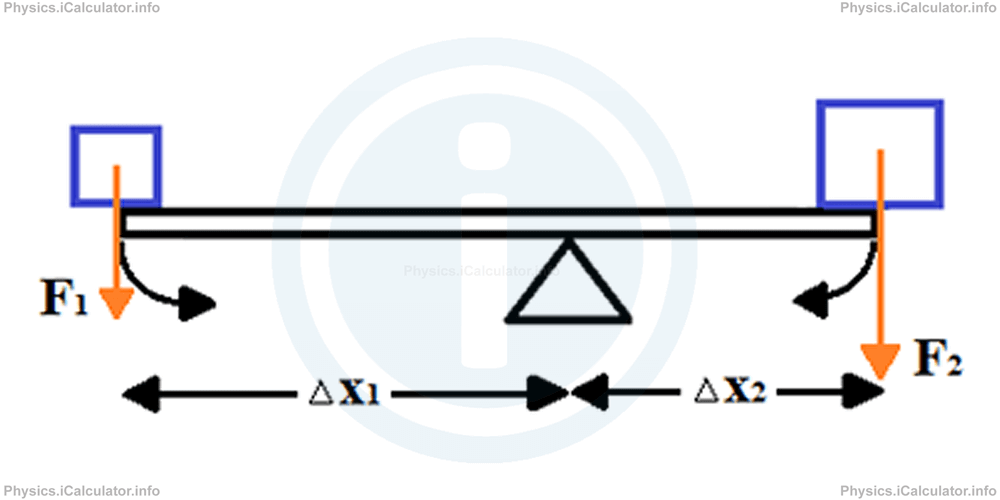
In the above figure, the load on the left tend to rotate the system anticlockwise as it exerts a downward force in that part of the bar due to its weight. On the other hand, the load on the right tend to rotate the system clockwise for the same reason. When the equilibrium is settled, these two opposite moments are balanced.
Therefore, based on all said above, we infer the following conclusion regarding the equilibrium in such systems:
"A system which tends to rotate around a fixed point is in equilibrium only when its clockwise moment of force is equal to the anticlockwise one"
This means the clockwise turning effect of one force is balanced by the anticlockwise turning effect of the other force.
Mathematically, we can write:
Equation 2
M⃗clockwise + M⃗anticlockwise = 0Or
If we substitute the corresponding quantities, we obtain
Equation 3
F⃗1⊥ × ∆x⃗1 + F⃗2⊥ × ∆x⃗2 = 0Or
Example 1
A 5 kg object is placed on the left end of a 4 m massless bar as shown in the figure.
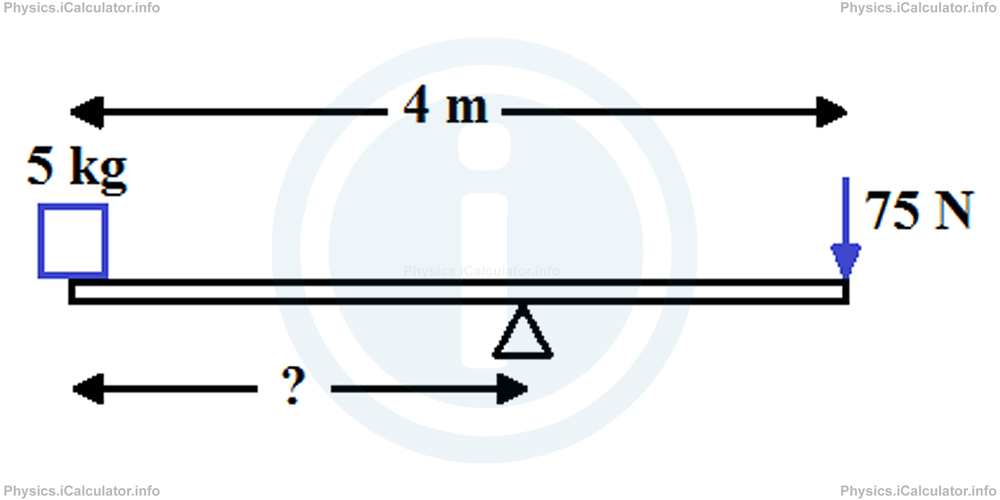
The system is balanced by a 75 N force acting vertically on the right end of the bar. What is the distance of the pivot from the left end of the bar? For convenience, take g = 10 N/kg.
Solution 1
The 5 kg object exerts a downward force equal to its weight to the left-end of the bar. Let's denote this force as F1. Thus, we have:
= 5 kg × 10 N/kg
= 50 N
Let's denote the required distance by d (or Δx, no matter). Thus, the other distance, i.e. from the pivot to the right end of the bar will be 4 - d. Therefore, since we know that the object tends to rotate the system anticlockwise while the force F clockwise, it is clear that the corresponding moments of force must be equal and opposite. If we take the anticlockwise as positive, we have:
F⃗1⊥ × ∆x⃗1 = -F⃗2⊥ × ∆x⃗2
If we focus only in the numerical values, not in the direction, we obtain
50 × d = 300-75 × d
75d + 50d = 300
125d = 300
d = 300/125 = 2.4 m
Therefore, the pivot must be at 2.4 m away from the left end (and 4 m - 2.4 m = 1.6 m away from the right end) of the bar to have equilibrium in this system.
Remark! Do not be confused by the fact that we used a scalar approach to solve this problem. Even if we used a vector approach, the result would be the same. The only difficulty in this regard is determining the directions correctly. Thus, if we consider the usual directions, we take Δx1 as positive because it starts from the object and ends to the pivot (therefore, it extends due right), while Δx2 is taken as negative because it starts from the right end of the bar (where the force acts) and lies towards left, up to the pivot. On the other hand, we can take the two acting forces as negative as they both act downwards.
Therefore, we have
-50 × d = -(-75) × [4-(-d)]
-50 × d = 300 + 75 × d
125 × d = -300
d = -300/125 = -1.6 m
The sign minus means that the object is on the left of the pivot, as here we take the pivot as a reference point.
You have reached the end of Physics lesson 6.4.1 What is Moment of Force?. There are 7 lessons in this physics tutorial covering Moment of Force. Conditions of Equilibrium, you can access all the lessons from this tutorial below.
More Moment of Force. Conditions of Equilibrium Lessons and Learning Resources
Whats next?
Enjoy the "What is Moment of Force?" physics lesson? People who liked the "Moment of Force. Conditions of Equilibrium lesson found the following resources useful:
- Definition Feedback. Helps other - Leave a rating for this definition (see below)
- Centre of Mass and Linear Momentum Physics tutorial: Moment of Force. Conditions of Equilibrium. Read the Moment of Force. Conditions of Equilibrium physics tutorial and build your physics knowledge of Centre of Mass and Linear Momentum
- Centre of Mass and Linear Momentum Revision Notes: Moment of Force. Conditions of Equilibrium. Print the notes so you can revise the key points covered in the physics tutorial for Moment of Force. Conditions of Equilibrium
- Centre of Mass and Linear Momentum Practice Questions: Moment of Force. Conditions of Equilibrium. Test and improve your knowledge of Moment of Force. Conditions of Equilibrium with example questins and answers
- Check your calculations for Centre of Mass and Linear Momentum questions with our excellent Centre of Mass and Linear Momentum calculators which contain full equations and calculations clearly displayed line by line. See the Centre of Mass and Linear Momentum Calculators by iCalculator™ below.
- Continuing learning centre of mass and linear momentum - read our next physics tutorial: Linear Momentum
Help others Learning Physics just like you
Please provide a rating, it takes seconds and helps us to keep this resource free for all to use
We hope you found this Physics lesson "Moment of Force. Conditions of Equilibrium" useful. If you did it would be great if you could spare the time to rate this physics lesson (simply click on the number of stars that match your assessment of this physics learning aide) and/or share on social media, this helps us identify popular tutorials and calculators and expand our free learning resources to support our users around the world have free access to expand their knowledge of physics and other disciplines.